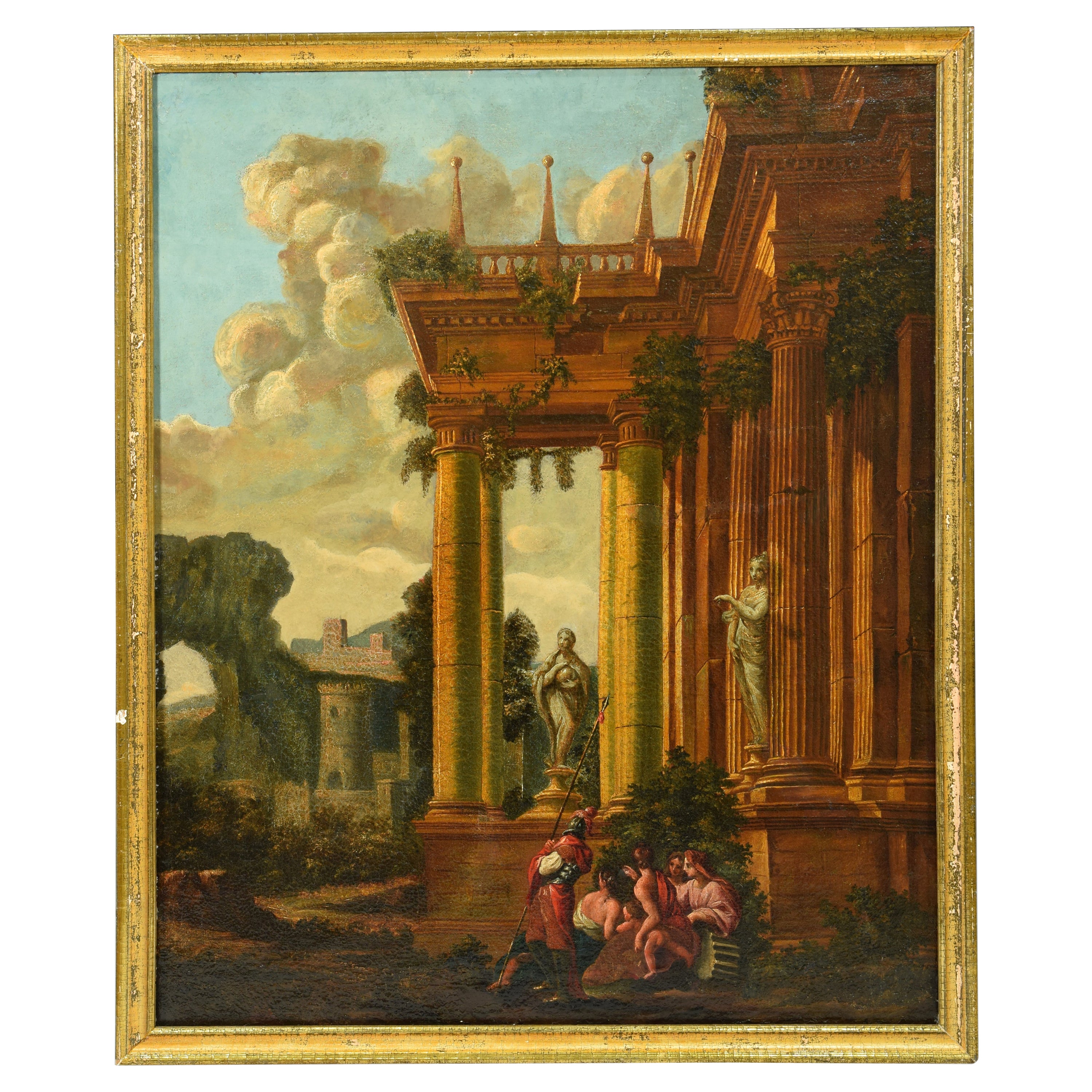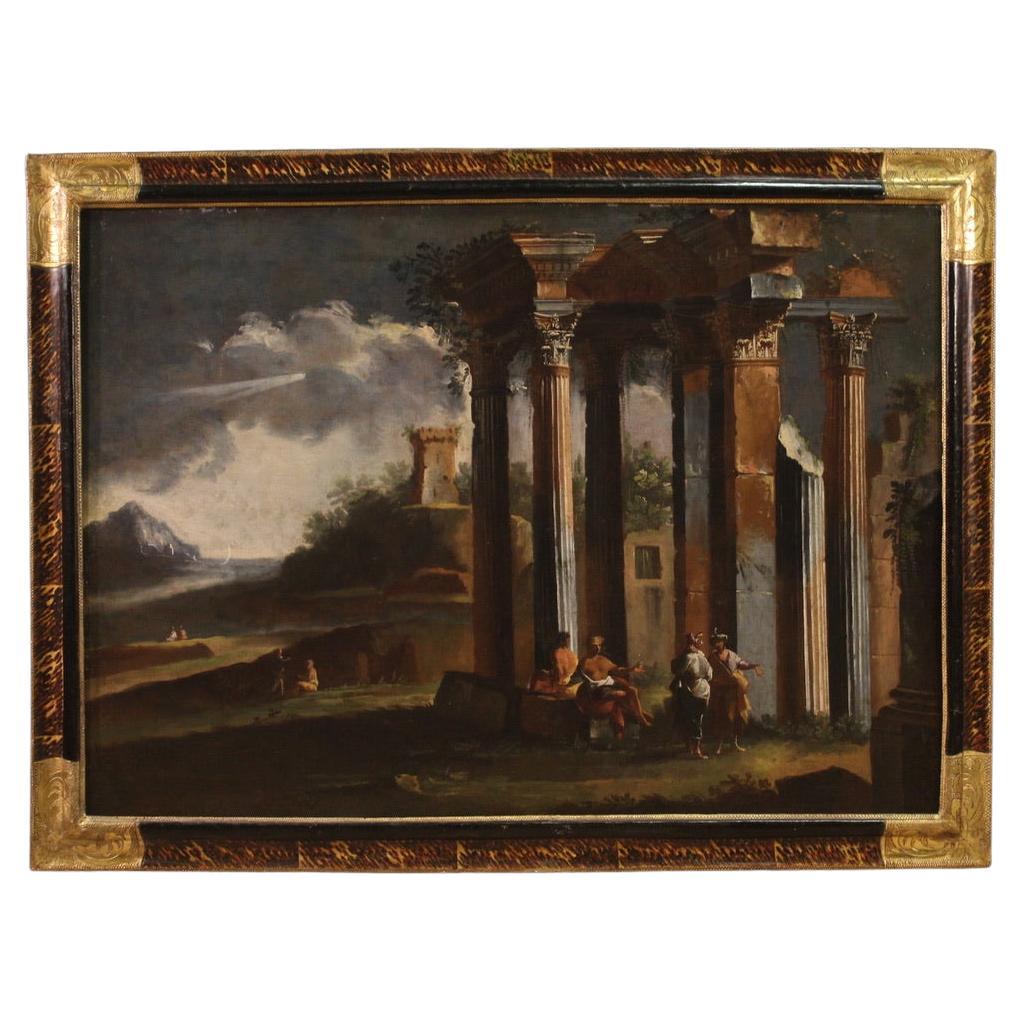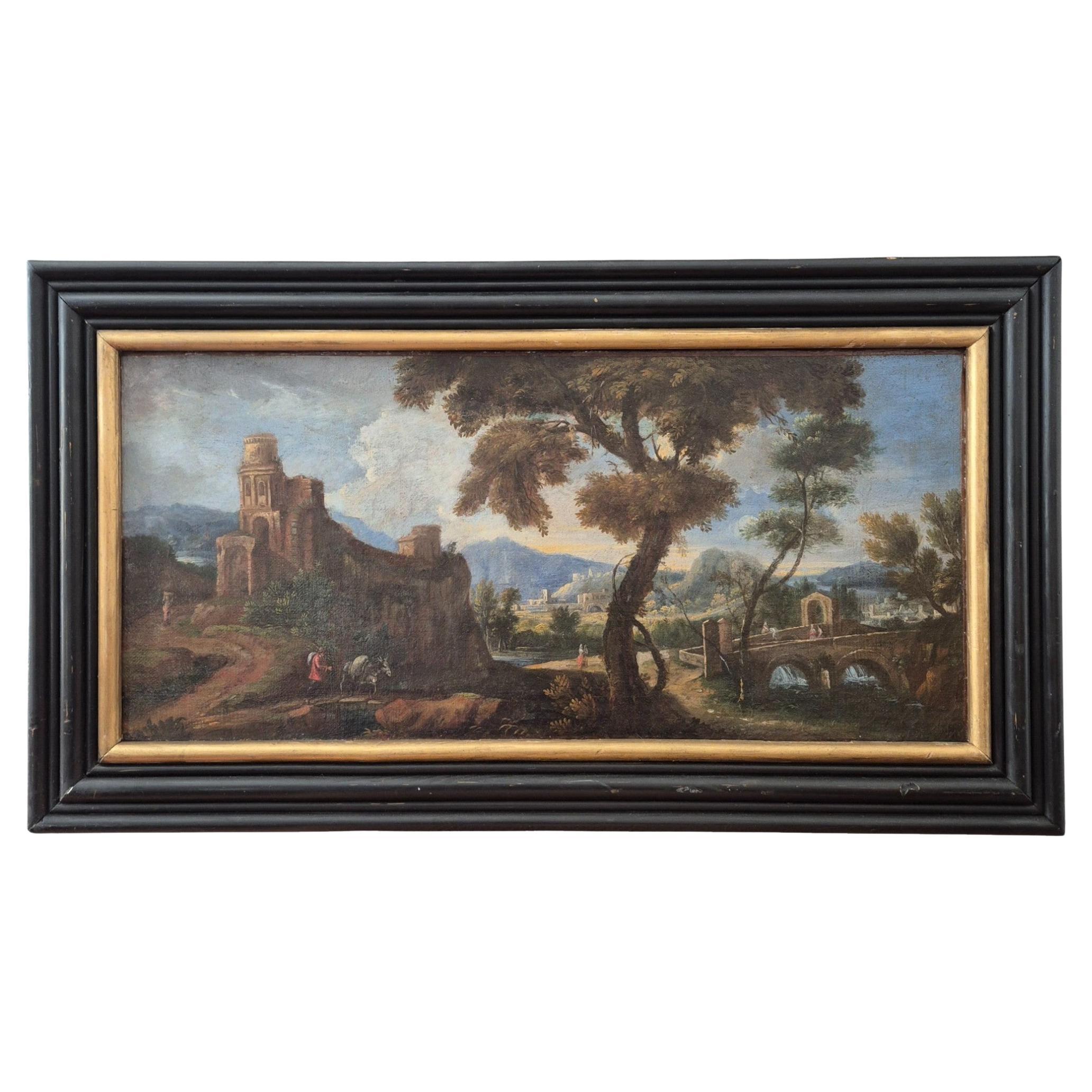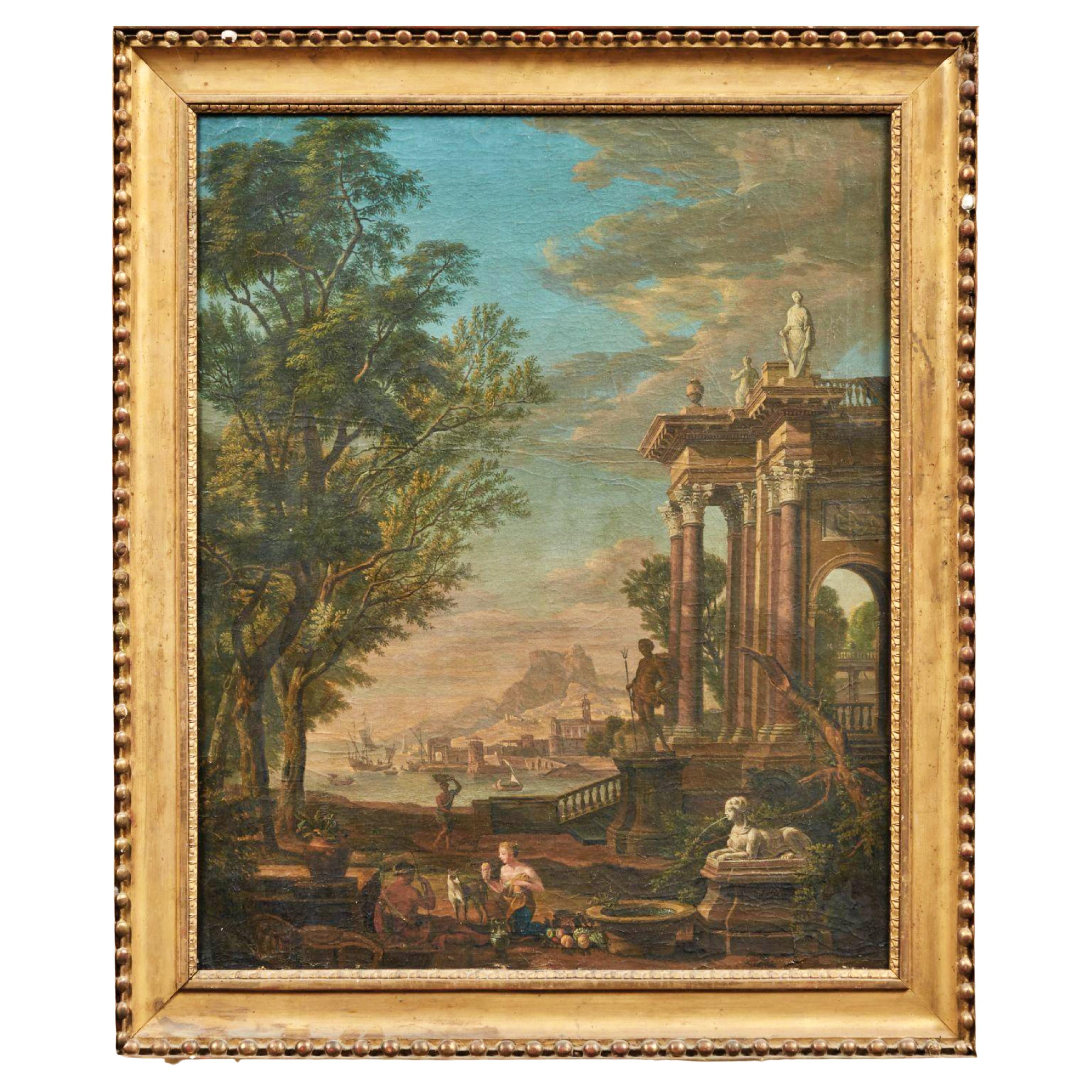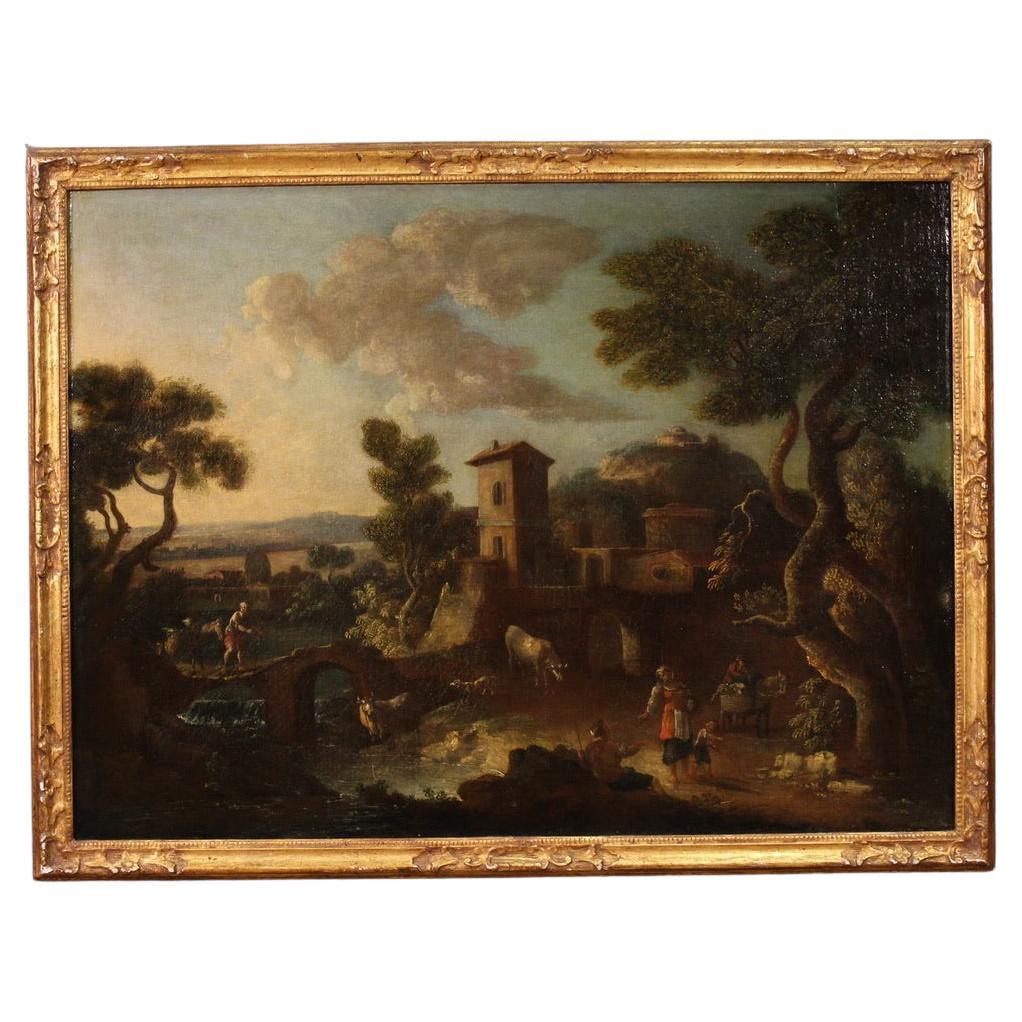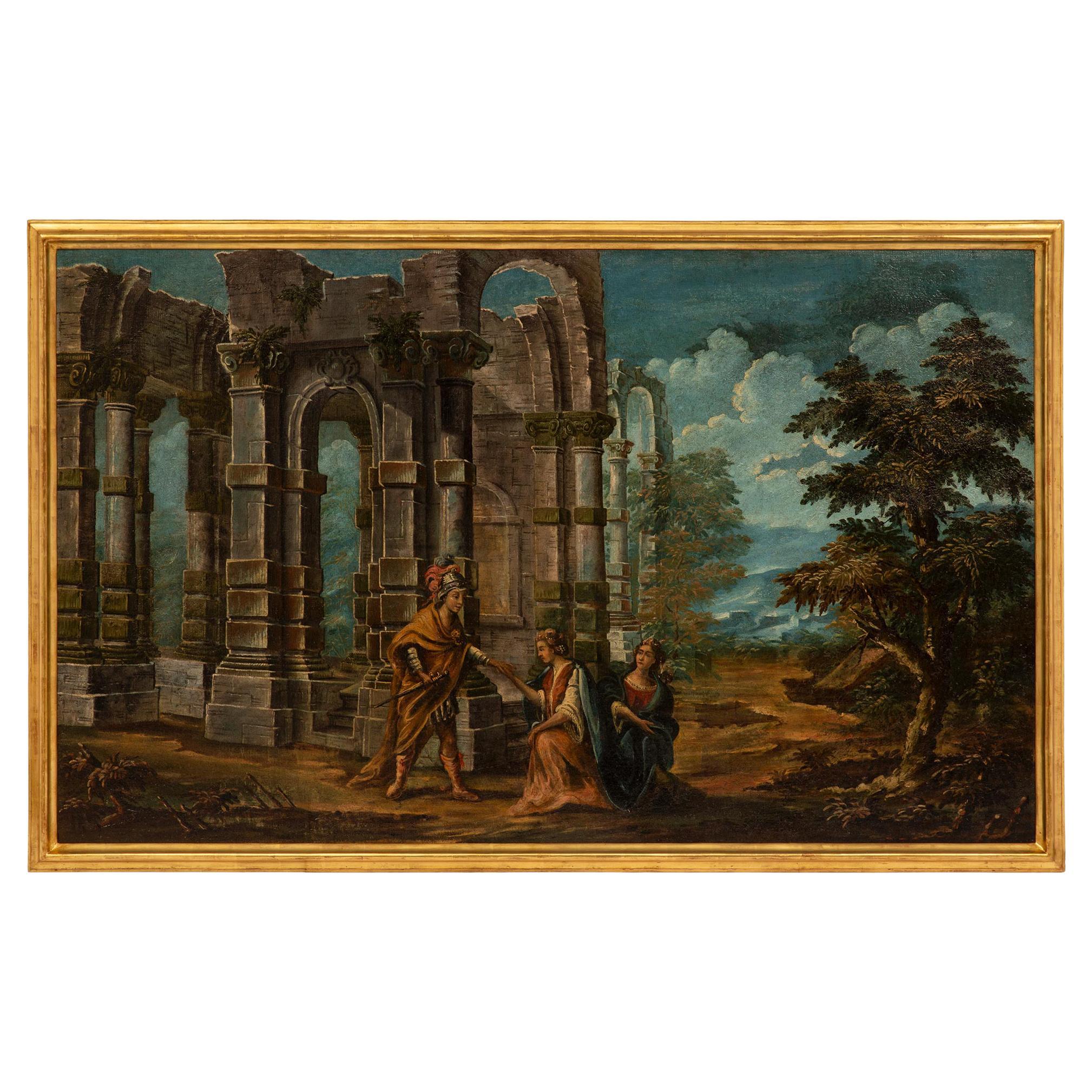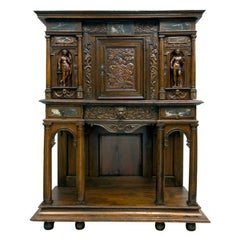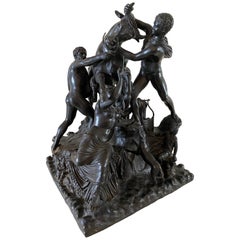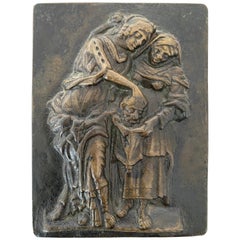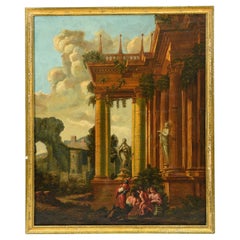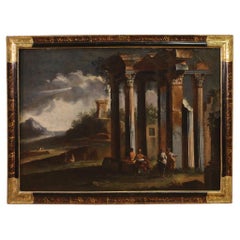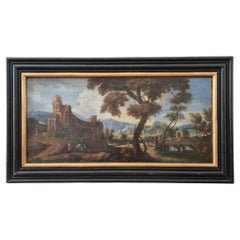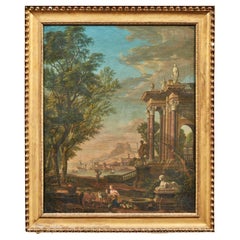Items Similar to 18th Century Ruins Landscape Attributed to Bartolomeo Pedon
Want more images or videos?
Request additional images or videos from the seller
1 of 6
18th Century Ruins Landscape Attributed to Bartolomeo Pedon
$11,200
$15,00025% Off
£8,445.91
£11,311.4925% Off
€9,768.10
€13,082.2825% Off
CA$15,713.54
CA$21,044.9225% Off
A$17,466.58
A$23,392.7425% Off
CHF 9,155.60
CHF 12,261.9725% Off
MX$213,309.16
MX$285,681.9125% Off
NOK 114,302.44
NOK 153,083.6325% Off
SEK 107,537.28
SEK 144,023.1425% Off
DKK 72,906.28
DKK 97,642.3425% Off
About the Item
Attributed to Bartolomeo Pedon (Italian 1665-1732)
"Ruins", circa 1700
Oil on canvas
69.5" x 52" inches framed
61" x 43.5" inches unframed
Pedon was born in October 1665. In 1716, he became part of the Fraglia, a guild of Venetian painters. He lived the lifestyle of a Bohemian and had a strong taste for poetry. Pedon spent most of his career as a painter in Padua, in the Monastery of San Benedetto, and died in February 1733.
The present painting, attributed to Pedon, relies on the late Seicento landscape culture of Northern Italy. The artist was clearly influenced by painters like Johann Anton Eismann (1604-1698), Hans de Jode (1630-1691), Carlo Brisighella, Ernst Daret and Cavalier Tempesta (1673-1701). Representative subjects of the Vedutisti artists of this period were romantic landscapes, harbour's views with vessels – often depicted in a Dutch manner –, and realistic "Bamboccianti" figures with classic architectural ruins. Pedon depicted in this painting not only a romantic fluvial landscape with a town in the foreground, fishermen unloading their nets and female figures having some rest, but he also expressed his great interest in the architectural elements from the antique period.
Pedon’s works can be compared to the paintings that Marco Ricci (1667-1730), nephew of the artist Sebastiano Ricci, and Antonio Martini (1672-1725) were producing at the time. Research by Banzato and Antoniazzi-Rossi has shown this chronology more accurately, and has enlightened the parallel development of the careers of Pedon and Marco Ricci. They argue that, around the time that Marco Ricci returned to Venice in 1711, Pedon seized upon aspects of Ricci's earlier career, in which he employed elements of Dutch origin. Following Ricci on his definitive return to Venice in 1716, after his experience in England, Pedon’s stylistic development would mirror Ricci's. In the 1720s the interest of both painters focused on spacious landscapes, with the mood of a pastoral idyll depicted in a classical manner.
The present work, which is attributed to Pedon, was probably painted around 1715-1720 (?). Comparable elements to Ricci's works of the same period are the type of the figures, the contours of distant mountains, the town at middle distance, the ruins and the sense of naturalism. Pedon’s pictorial interpretation is flighty and lively. He employed bright and vivacious colours, and created a particular pictorial technique named macchiette, which can be found in the works of Eismann during the late 17th century. Another characteristic of Pedon’s paintings is the “inappropriate” use of the perspective, as can be observed on the present canvas, where the perspective of the landscape is made up of multiple and inconsistent points of views .
An interesting stylistic element is also the foliage of the tree at the upper left of the painting, especially the frond set against the sky, as well as the trunk and the branches. It seems that Pedon was inspired by the late works of Salvatore Rosa and his depicting of foliage and trees.
It seems possible that Pedon’s knowledge of the Rosa manner has been refreshed by renewed contact with his works. Recently, Marshall has argued in his research to attribute two of Salvator Rosa’s landscape paintings to Barotolomeo Pedon, while emphasising the elements stemming from Rosa.
- Attributed to:Bartolomeo Pedon (Painter)
- Dimensions:Height: 69.5 in (176.53 cm)Width: 52 in (132.08 cm)Depth: 2 in (5.08 cm)
- Style:Baroque (Of the Period)
- Materials and Techniques:
- Place of Origin:
- Period:
- Date of Manufacture:circa 1700
- Condition:Condition reports are provided to our clients only upon request.
- Seller Location:Miami Beach, FL
- Reference Number:Seller: Inventory no. KKOM-02 1stDibs: LU977614085111
About the Seller
5.0
Vetted Professional Seller
Every seller passes strict standards for authenticity and reliability
Established in 1962
1stDibs seller since 2013
155 sales on 1stDibs
- ShippingRetrieving quote...Shipping from: Miami Beach, FL
- Return Policy
Authenticity Guarantee
In the unlikely event there’s an issue with an item’s authenticity, contact us within 1 year for a full refund. DetailsMoney-Back Guarantee
If your item is not as described, is damaged in transit, or does not arrive, contact us within 7 days for a full refund. Details24-Hour Cancellation
You have a 24-hour grace period in which to reconsider your purchase, with no questions asked.Vetted Professional Sellers
Our world-class sellers must adhere to strict standards for service and quality, maintaining the integrity of our listings.Price-Match Guarantee
If you find that a seller listed the same item for a lower price elsewhere, we’ll match it.Trusted Global Delivery
Our best-in-class carrier network provides specialized shipping options worldwide, including custom delivery.More From This Seller
View AllVery Rare and Important 16th C. French Renaissance Cabinet or Dressoir, ca. 1580
By Jacques Androuet Du Cerceau
Located in Miami Beach, FL
Walnut with verde antico marble inlay, with two wholly carved draped female allegorical figures within arched recesses, and a bas-relief on the central door. Rich and heavily carved...
Category
Antique 18th Century and Earlier French Renaissance Cabinets
Materials
Oak, Walnut
$17,600 Sale Price
37% Off
Pair of Bronze Plaquettes with Putti, Signed Clodion, French, 19th Century
By Claude Michel Clodion
Located in Miami Beach, FL
In the first plaquette the putti drink wine, eat grapes, make music and wrestle in a field with a round temple in the background. Signed CLODION
In the second plaquette, young sat...
Category
Antique Mid-19th Century French Neoclassical Figurative Sculptures
Materials
Bronze
$960 Sale Price / set
56% Off
Italian Bronze Sculpture Group of the Farnese Bull, 19th Century
Located in Miami Beach, FL
This Italian bronze sculpture group of the Farnese Bull, after the antique, is handsomely modeled and detailed throughout with a lovely blackish to cocoa ...
Category
Antique Mid-19th Century Italian Neoclassical Figurative Sculptures
Materials
Bronze
$6,000 Sale Price
20% Off
Judith with the Head of Holofernes, Plaquette After Riccio, Italian 17th Century
By Andrea Briosco (Riccio)
Located in Miami Beach, FL
Judith with the head of Holofernes, unsigned rectangular cast bronze plaquette, by Andrea Briosco, called Riccio (1470-1532), Judith...
Category
Antique 17th Century Italian Renaissance Figurative Sculptures
Materials
Bronze
$800 Sale Price
20% Off
Dazzling Italian Cut Velvet Tapestry with Arabesque Motif
By Fortuny
Located in Miami Beach, FL
This highly decorative rare Italian cut velvet tapestry panel is finished on all edges and ready for hanging on a wall or using as a bed cover. It coul...
Category
Vintage 1970s Italian Art Deco Tapestries
Materials
Silk
$1,760 Sale Price
20% Off
Pair Gilt Bronze Andirons in the Style of Andrea Briosco (Riccio)
By Andrea Briosco (Riccio)
Located in Miami Beach, FL
These highly articulated gilt bronze andirons are based on a 16th century design for candlesticks by the great Italian renaissance sculptor Andrea Briosco known as Riccio (1470-1532). Riccio's great masterpiece is the Paschal candelabrum in the cathedral of Padua which contained mythological creatures, satyrs and grotesques. Despite the shocking motifs, the church of Sant Antonio...
Category
Antique 19th Century Italian Renaissance Revival Andirons
Materials
Ormolu
$2,000 Sale Price / set
55% Off
You May Also Like
Landscape with Classical Ruins, Oil on Canvas, Attributed to Giner, Vicente
Located in Madrid, ES
Landscape with classical ruins. Oil on canvas. Attributed to Giner, Vicente (ca. 1636-1681).
Reengineered (reentelado in spanish).
Landscape with rocks and buildings in the background that presents, in the foreground, constructions with a marked classicist air, accompanied by two female sculptures on two pedestals. At the foot of this building, there is a group of people, dressed in the classic way (women, children and a soldier with a spear). Vicente Giner, canon and artist from Castellón, is documented working in Rome during the last quarter of the seventeenth century (until he died here in 1681), where he requested, together with others, from Carlos II...
Category
Antique 17th Century European Baroque Paintings
Materials
Other
18th Century Oil on Canvas Venetian Architectural Capriccio Landscape Painting
Located in Vicoforte, Piedmont
Venetian school of the mid-18th century. Oil on canvas painting depicting an invented landscape composition of remarkable pictorial quality. On the right is a ruined building, probab...
Category
Antique 1750s Italian Paintings
Materials
Canvas
Italian landscape with ruins, Oil on canvas, 19th century
Located in NICE, FR
An 19th-century oil on canvas depicting an Italian landscape characterized by a broad view of hills and mountains in the distance and a river whose winding course stretches to the fr...
Category
Antique 1850s Italian Napoleon III Paintings
Materials
Canvas
18th Century French School, after I. de Moucheron "Landscape with a Fountain"
Located in Madrid, ES
18th century French School, after I. de Moucheron,
Landscape with a Fountain,
canvas, monogrammed lower right «JBF»,
with restorations
67 x 55 CM - 26,4 x 21,7 IN.
good condition
Category
Antique 18th Century French Baroque Wallpaper
Materials
Paint
$5,248 Sale Price
20% Off
17th Century Oil on Canvas Italian Antique Painting Landscape with Figures, 1680
Located in Vicoforte, Piedmont
Antique Italian painting from the second half of the 17th century. Oil on canvas artwork depicting a wonderful bucolic landscape with a village, common people and grazing animals. Wi...
Category
Antique 1680s Italian Paintings
Materials
Canvas
Italian 18th Century Oil on Canvas Painting of Ruins and Figures
Located in West Palm Beach, FL
A sensational and large scaled Italian 18th century oil on canvas painting of ruins and figures. The painting, with wonderful and vibrant colors throughout, has two young maidens kne...
Category
Antique 18th Century Italian Paintings
Materials
Canvas, Giltwood
More Ways To Browse
Antique Cavalier Furniture
Martini Rossi
Padua Painting
Dior Trunk
Antique Dutch Trunk
Antique Chinese Rice Paper Paintings
Mexican Colonial Painting
Tucson Vintage Furniture
17th Century Lace
Framed Marble Portrait
Large Rectangular Oil Paintings
Russian Photo Frame
Used Furniture Hayward
Ancestral Portrait
Antique Chinese Ancestor Paintings
Clair Seglem
Cuzco School
English Castle Painting
